
Commitment of Traders Forex: Unveiling Market Insights for Successful Trading
Table of Contents
ToggleUnderstanding the Commitment of Traders (COT) Report: A Deep Dive for Forex and Futures Traders
Welcome to this exploration of one of the most insightful, yet often underutilized, tools available to market participants: the Commitment of Traders (COT) report. Have you ever wondered what the really big players – the hedge funds, the commercial hedgers, the institutional money managers – are doing in the futures and options markets? Their collective positioning can offer profound clues about underlying market sentiment and potential future price movements. That’s precisely what the COT report aims to reveal.
Think of the market as a vast ocean, and different types of ships – from massive supertankers to nimble speedboats – are all navigating its waters. The COT report is like a weekly satellite snapshot showing where these different vessels are clustered, which direction many of the largest ones are pointed, and how much cargo (positions) they are carrying. Understanding this picture, especially in markets linked to currency pairs, can give you a significant edge in your analysis.
Our goal here is to demystify the COT report, transforming it from a dense table of numbers into a powerful lens through which you can view market dynamics. We will guide you through its structure, teach you how to interpret the data, and show you how to apply these insights to your trading, particularly if you’re involved in the Forex market. Ready to see what the big fish are doing?
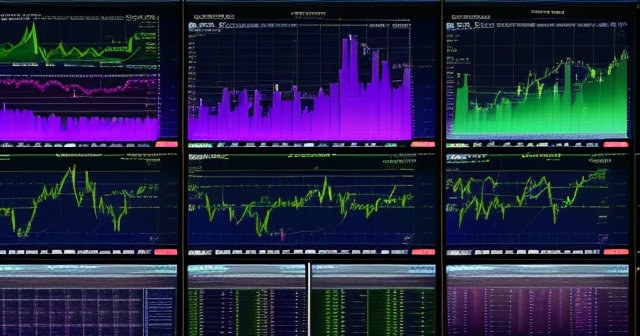
At its core, the Commitment of Traders (COT) report is a public record that details the positions held by different categories of traders in selected futures and options markets. It’s published weekly by the Commodity Futures Trading Commission (CFTC) in the United States, with a similar report covering specific markets like ICE Futures Europe being published by the relevant exchange.
The primary purpose of the COT report, as stated by the CFTC itself, is to enhance market transparency. By showing the breakdown of open interest across various trader groups, it provides market participants with a unique perspective on the underlying structure of positions within a market. This transparency is crucial for a healthy and well-understood financial ecosystem.
- The COT report is issued weekly, ensuring timely updates on market sentiment.
- It categorizes traders, highlighting the behavior of various participants.
- Understanding the COT report can position traders to better anticipate market movements.
Consider any futures market – whether it’s for corn, crude oil, gold, or the Euro currency. For every long contract held by one trader, there must be a corresponding short contract held by another. The total number of outstanding contracts that have not yet been offset or delivered upon is known as open interest. The COT report takes this total open interest for specific markets and breaks it down, showing who is holding which side of the trade.
The reports cover futures markets where 20 or more traders hold positions at or above specific reporting levels set by the CFTC. This threshold ensures that the report focuses on markets with significant activity from larger, reportable traders, making the data highly relevant for understanding major flows and sentiment shifts.
So, in essence, the COT report gives us a weekly x-ray of the large positions in key futures and options markets, categorized by the type of trader holding those positions. It’s a snapshot of the market’s commitments.
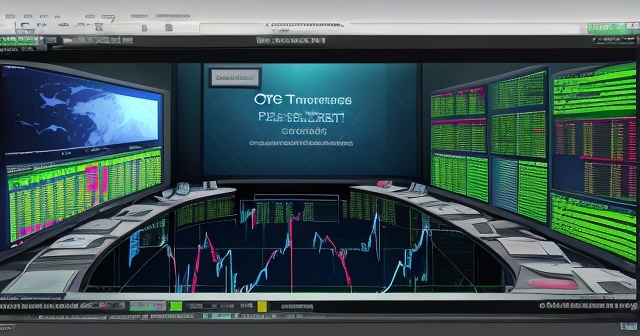
Understanding the process behind the COT report helps us appreciate its strengths and limitations. The data collection is a rigorous process managed by the CFTC.
Each week, Futures Commission Merchants (FCMs), clearing members, and foreign brokers who hold positions for clients, as well as traders who hold reportable positions themselves, must submit data to the CFTC. These submissions detail the size of their reportable positions (both long and short) across various futures and options markets.
A critical element of this process is the timing. The data is collected as of the close of trading on **Tuesday** of each week. This snapshot provides a fixed point in time for analysis.
The CFTC then aggregates and processes this vast amount of data. Importantly, traders are classified into specific categories based on their primary business purpose, as self-reported on CFTC Form 40. The CFTC reviews these classifications to ensure accuracy, but the initial categorization relies on the traders’ own descriptions of their activities (e.g., hedging, speculating, spreading).
The COT reports are typically released to the public on the following **Friday** afternoon at 3:30 p.m. Eastern Time (US). This means there is a lag between the data snapshot (Tuesday close) and its public release (Friday afternoon). This lag is a key factor traders must consider when using the report for analysis.
While the primary source is the CFTC website, the data is also made available through various third-party platforms like Barchart, Myfxbook, and the CME Group website, often with charting tools and historical data series that make analysis easier. This accessibility allows a wide range of traders to delve into the data.
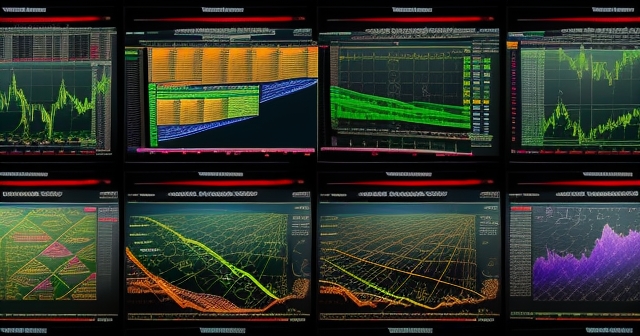
The power of the COT report lies in its breakdown by trader category. The CFTC publishes several different versions of the COT report (Legacy, Disaggregated, and Traders in Financial Futures – TFF), which use slightly different classification systems. Understanding these categories is fundamental to interpreting the data correctly.
Historically, the most common classification was the **Legacy Report**, which categorized traders into three main groups:
- Commercials: These are entities using futures and options markets primarily for hedging purposes. This includes producers, merchants, processors, or users of a commodity (like farmers hedging crops, airlines hedging fuel costs, or manufacturers hedging metal prices). In financial markets, this might include large financial institutions hedging currency or interest rate exposure. Commercials are often seen as the “smart money” in the long run, as they are trading based on fundamental supply and demand related to their core business, not just price speculation.
- Non-commercials: This group consists primarily of large speculators. This includes hedge funds, money managers, and other large institutions that are trading for profit through speculation, not hedging. They are generally trend-following or momentum-driven and reactive to price changes. Their aggregate positions are often watched closely for signals of prevailing speculative sentiment.
- Non-reportables: This represents the positions held by smaller traders whose positions do not meet the CFTC’s reporting threshold. Often referred to as “small speculators,” their collective positions are less impactful on market structure compared to the large reportable traders.
The **Disaggregated COT Report** was introduced to provide a more granular view, especially for commodities markets. It breaks down the Commercial and Non-commercial categories further:
- Producer/Merchant/Processor/User: This is a subset of Commercials directly involved in the physical commodity. Their activity is primarily hedging.
- Swap Dealers: These are entities (usually financial institutions) that use futures markets to hedge risk associated with swap agreements they hold with clients. They bridge the gap between the physical or financial cash market and the futures market. Their positions can sometimes look non-intuitive because they are offsetting risk from another market.
- Managed Money: This is a very important category for speculators. It represents registered commodity trading advisors (CTAs) and commodity pool operators (CPOs) – essentially, professional money managers who trade futures and options on behalf of clients (like hedge funds and investment funds). They are pure speculators and their aggregate positioning is widely tracked as a proxy for large fund sentiment.
- Other Reportables: This category includes large traders who are not classified in the other three disaggregated categories but still meet the reporting threshold. This could include large institutional investors, endowments, or proprietary trading firms whose primary business isn’t covered by the other labels.
For financial products like currencies, interest rates, and equity indices, the **Traders in Financial Futures (TFF) Report** uses a slightly different breakdown:
- Dealer/Intermediary: Similar to Swap Dealers, these are large financial institutions facilitating trades and hedging financial risks.
- Asset Manager/Institutional: Includes pension funds, insurance companies, mutual funds, etc., who use futures for portfolio management, hedging, or strategic asset allocation.
- Leveraged Funds: This category is very similar to Managed Money in the Disaggregated report and represents hedge funds and other money managers primarily engaged in speculative trading. This is another key group watched closely by speculators.
- Other Reportables: Similar to the Disaggregated report, covering other large reportable traders not fitting into the above.
| Trader Category | Description |
|---|---|
| Commercials | Entities using futures for hedging purposes. |
| Non-commercials | Large speculators trading for profit. |
| Non-reportables | Smaller traders whose positions do not meet the reporting threshold. |
| Managed Money | Professional money managers trading on behalf of clients. |
While the Legacy report is still available and widely used (especially for historical comparisons), the Disaggregated and TFF reports offer more detailed insights into specific market participant behavior. For Forex traders, understanding the positioning of Managed Money (in commodity-linked currencies like AUD, CAD) and Leveraged Funds (in major currency futures like EUR, JPY, GBP) is particularly valuable, as these groups often represent the bulk of large-scale speculative positioning that can drive or reverse trends.
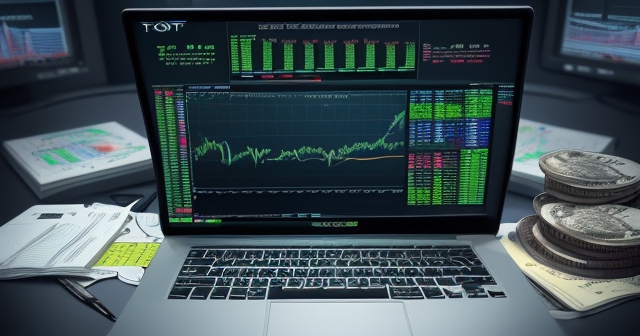
Out of all the trader categories, why do we often place such emphasis on the positions of the speculative groups, particularly Managed Money and Leveraged Funds? It’s because these traders are typically trading purely for profit, reacting to price trends and market news. Their aggregate positions can provide significant clues about the prevailing speculative sentiment and momentum in a market.
These are the traders who are often trying to ride trends. If a market is moving higher, they tend to build significant net long positions, adding fuel to the rally. Conversely, in a downtrend, they accumulate net short positions, reinforcing the decline. Their activity can amplify existing price movements.
However, their positioning is also crucial for identifying potential turning points. When Managed Money or Leveraged Funds build historically large net long positions, it suggests a potentially “crowded” long trade. If something then causes the market to reverse, the unwinding of these large positions (selling their longs) can trigger sharp declines as they rush to exit. The same logic applies to historically large net short positions. A reversal in a downtrend can be exacerbated by short-covering (buying back shorts) from these large speculators.
| Key Insights | Description |
|---|---|
| Trends | Managed Money often builds long positions in uptrends. |
| Turning Points | Historically large positions can signal market reversals. |
| Commercials vs. Speculators | Commercials hedge based on business needs, while speculators trade for profit. |
While Commercials (hedgers) are also large players, their activity is often driven by their underlying business needs, which might be counter-trend. For example, a farmer might sell futures to hedge his crop even if prices are low, while a consumer might buy futures to lock in costs even if prices are high. Their positioning tends to be net short overall in commodities they produce and net long in commodities they consume, regardless of the short-term price trend. However, significant shifts in Commercial positioning, particularly when they move away from their typical stance or accumulate positions opposite to speculators at extremes, can also be highly informative.
But for understanding the pure directional bets that are often riding (and sometimes driving) trends, keeping a close eye on the net positioning of the large speculative groups like Managed Money and Leveraged Funds is paramount. Their collective view, as revealed by the COT report, is a powerful sentiment indicator.
The core data points you’ll analyze in a COT report are Open Interest and the Net Position for each trader category in a specific market. Let’s break down what these mean and how to interpret them.
Open Interest: We touched on this earlier. It’s the total number of outstanding futures or options contracts that haven’t been closed out. Rising open interest, especially alongside rising prices, can indicate new money flowing into the market on the long side, confirming a trend’s strength. Falling open interest, particularly during a price move, might suggest position squaring or liquidation, potentially signaling a weakening trend or impending reversal.
Net Position: This is perhaps the most watched figure. For each trader category, the net position is calculated as the total number of long contracts minus the total number of short contracts. If a group holds more long contracts than short, they have a **net long position**. If they hold more short contracts than long, they have a **net short position**. The size of the net position, and changes in it week-over-week, are what give us insights into sentiment.
For example, if the Managed Money category’s net position in Euro futures increases significantly from +50,000 contracts long to +80,000 contracts long over a few weeks, it tells us that large speculators are becoming much more bullish on the Euro. Conversely, if their net position flips from being slightly net long to heavily net short, it indicates a strong shift towards bearish sentiment among these large funds.
- Direction: Is the net position long or short? This indicates the overall bullish or bearish leaning of the group.
- Magnitude: How large is the net position? Is it increasing or decreasing? A rapidly increasing net long position, for instance, suggests growing bullish conviction.
- Extreme Levels: Are current net positions at historically high or low levels? This is crucial for identifying potential turning points. If Managed Money net long positions in Gold futures are at their highest level in five years, it suggests a potentially overcrowded bullish trade that might be vulnerable to a reversal.
- Week-over-Week Change: How did the net position change from the previous week? Did a group significantly add to or reduce their long or short exposure? These changes can be more informative than the static number itself, indicating shifts in momentum or conviction.
| Analysis Point | Consideration |
|---|---|
| Direction | Identifying overall bullish or bearish sentiment. |
| Magnitude | Tracking the size and growth of net positions. |
| Extreme Levels | Monitoring historical highs and lows for insights. |
| Week-over-Week Change | Evaluating significant shifts in net positioning. |
By tracking the net positions of key groups, particularly Managed Money and Leveraged Funds, over time, you can build a visual history (charts are indispensable for this) that helps identify trends in sentiment and potential divergences with price action. For instance, if price is making new highs but Managed Money net long positions are decreasing, it could signal waning speculative interest despite the rising price, a potential bearish divergence.
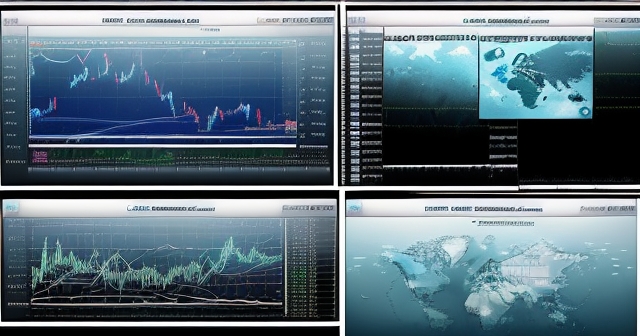
While the COT report directly covers futures markets, its application to the Forex (spot currency) market is immense. Why? Because the trading activity in currency futures, particularly on exchanges like the CME Group (which hosts futures for major currencies like the Euro, British Pound, Japanese Yen, Australian Dollar, Canadian Dollar, Swiss Franc, etc.), is a major component of overall sentiment and positioning towards those currencies.
When large traders take significant positions in, say, Euro FX futures, they are essentially taking a directional bet on the Euro versus the US Dollar (as these futures are typically quoted against the USD). The aggregate net positioning of these large traders in Euro futures provides a powerful insight into the sentiment surrounding the EUR/USD currency pair.
Here’s how we can use COT data for Forex analysis:
- Gauging Currency Sentiment: Track the net positions of Managed Money/Leveraged Funds for major currency futures (EUR, GBP, JPY, AUD, CAD, CHF, MXN, NZD, BRL). A large and growing net long position in EUR futures suggests significant speculative bullishness on the Euro relative to the Dollar, which supports an upward bias in EUR/USD. Conversely, a large and growing net short position in JPY futures points to speculative bearishness on the Yen relative to the Dollar, supporting an upward bias in USD/JPY.
- Identifying Potential Reversals: Look for positioning extremes. When Managed Money accumulates historically large net long positions in a currency, it might signal that speculative bullish sentiment is reaching its peak. If the currency pair then starts to turn lower, the potential for a sharp decline increases as those crowded long positions are exited. The same logic applies to extreme net short positions preceding potential bottoms and rallies (short-covering rallies).
- Confirming Trends: If a Forex pair is in an uptrend and the COT data shows Managed Money is steadily increasing their net long positions in the corresponding currency future, it confirms that large speculators are supporting and fueling the trend. A downtrend confirmed by increasing net short positions among speculators is equally valid.
- Spotting Divergences: As mentioned earlier, pay attention if price action and COT positioning diverge. If the EUR/USD is making new highs, but Managed Money’s net long position in Euro futures is decreasing or stagnant, it could signal waning conviction from large speculators, potentially foreshadowing a price correction or reversal.
Analyzing COT data for currency futures gives you a view into the “institutional flow” that isn’t immediately visible on a standard Forex spot chart. It helps you understand whether major price movements are being driven by fresh speculative bets, hedging activity, or position unwinding.
If you’re engaged in Forex trading or exploring different CFD instruments, understanding these underlying dynamics is incredibly valuable. Building a relationship with a broker that provides robust platforms and tools can enhance your ability to act on these insights.
If you’re considering beginning Forex trading or exploring more CFD products, then Moneta Markets is a platform worth considering. It comes from Australia and offers over 1000 financial instruments, suitable for both novice and professional traders.

One of the most powerful ways to use COT data is by identifying positioning extremes. Markets often revert to the mean, and this principle can apply to sentiment as revealed by the COT report.
When a particular trader category, especially the speculative groups like Managed Money or Leveraged Funds, reaches a net long or net short position that is unusually large compared to its historical range, it suggests that the market is potentially becoming “crowded” on one side. These extremes don’t necessarily mean a reversal is imminent the very next day – extremes can persist for some time – but they do signal that the market’s vulnerability to a sharp move in the opposite direction is increasing.
How do you identify an extreme? There’s no single definition, but common methods include:
- Visual Inspection on Charts: Plotting the net position data for a category over time (e.g., 2-5 years) and visually identifying historical highs and lows.
- Percentage of Open Interest: Calculating the net position as a percentage of total open interest for that market. Unusually high percentages can indicate extremes.
- Percentile Rank: Determining where the current net position falls within the historical range (e.g., is it in the 90th percentile for net long positions, meaning 90% of the time over the past few years the net long position has been smaller?).
When you see Managed Money net long positions in a currency future reaching multi-year highs, it signals that the vast majority of large speculators are already long. This leaves fewer potential buyers to drive the price higher and a large pool of existing longs who could become forced sellers if the price begins to fall. This condition increases the probability of a sharp correction or reversal triggered by profit-taking or stop-loss cascades.
Conversely, historically large net short positions suggest that most speculators who wanted to short the market already have. This decreases the potential supply of sellers and creates a large pool of short positions that would need to be bought back if the price starts to rise (short-covering). This condition increases the probability of a sharp rally.
It’s important to note that COT extremes are best used as a contrarian indicator in conjunction with price action. An extreme COT positioning doesn’t mean “sell immediately.” It means “be on alert for signs of a reversal in price.” If price starts to confirm the potential reversal suggested by the COT extreme (e.g., breaks a key support level after Managed Money shows extreme net longs), the probability of a successful trade based on this signal increases significantly.
While the COT report is a powerful tool, it is not a crystal ball and should rarely be used in isolation. Its greatest value comes from being integrated into a broader analytical framework that includes technical analysis and fundamental analysis.
Think of the COT report as providing context about the market’s underlying sentiment structure, but relying on price charts (technical analysis) and economic news/events (fundamental analysis) to provide the timing and catalysts for potential moves.
Here are some ways to integrate COT data:
- Confirmation: If technical indicators (like moving average crossovers, chart patterns, or support/resistance breaks) are suggesting a bullish move in a Forex pair, check the COT data for the corresponding currency future. Is Managed Money accumulating net long positions? This confirmation from the COT report strengthens the bullish technical signal.
- Divergence as a Warning: If price is trending strongly but the COT data shows the speculative group’s net positioning is weakening or even moving in the opposite direction, it provides a warning that the trend might be losing internal strength. This divergence suggests you should be cautious or look for signs of trend exhaustion on the price chart.
- Fundamental Catalysts and COT: Fundamental news releases (like interest rate decisions, GDP reports, inflation data) are often the catalysts that trigger significant market moves. If the COT report shows an extreme level of speculative positioning in a currency future, a strong fundamental data point released later in the week or the following week could trigger the unwinding of those extreme positions, leading to an exaggerated price reaction. Knowing the COT positioning helps you anticipate how sensitive the market might be to upcoming news.
- Identifying Strength of Moves: A strong price move that occurs alongside a significant increase in net positioning by Managed Money suggests the move is being fueled by fresh speculative capital, which can give the trend more staying power initially. A move that happens without significant COT position changes might be less robust.
By combining the “who is positioned where” insight from the COT report with the “what is the price doing” from technical analysis and the “why is it moving” from fundamental analysis, you create a more comprehensive and robust understanding of the market landscape. This layered approach to analysis significantly improves your decision-making process.
Accessing the raw Commitment of Traders data is straightforward, as the CFTC makes it publicly available. However, interpreting the raw data files can be challenging for beginners. Fortunately, numerous resources simplify the process.
- CFTC Website: The official source. You can find the reports in various formats, including zipped CSV files and older PDF formats. Look for the “Commitment of Traders” section under “Market Data & Analysis.” While comprehensive, navigating the historical data requires some familiarity with spreadsheets or programming.
- Third-Party Websites: Many financial websites provide COT data in more user-friendly formats, often with charting capabilities. Examples include:
- Barchart.com: Offers free historical COT charts for numerous markets, allowing you to easily visualize net positions and open interest over time.
- Myfxbook.com: While primarily a Forex analysis site, Myfxbook provides COT data specifically focused on currency futures, often presented in intuitive charts that compare different currency positions.
- CME Group Website: As a major exchange for many of the futures contracts covered, the CME Group site also provides COT data access and resources related to the specific markets they list.
- Trading Platforms: Some advanced trading platforms or charting software offer integrated COT indicators that can be overlaid directly onto price charts, providing a seamless analytical experience.
When accessing the data, be aware of the different report formats (Legacy, Disaggregated, TFF) and ensure you are consistently using the same format for your analysis over time, as the categories differ. For Forex traders, focusing on the TFF report for major currency futures and potentially the Disaggregated report for commodity-linked currencies (AUD, CAD) and precious metals (Gold, Silver) which can influence currency flows, is generally the most relevant approach.
In choosing a trading platform, consider one that supports multiple analysis methods and provides access to various markets. The right tools can make applying COT insights to actual trades much more efficient.
When selecting a trading platform, Moneta Markets‘ flexibility and technological advantages are worth mentioning. It supports major platforms like MT4, MT5, and Pro Trader, combining high-speed execution with low spread settings to provide a good trading experience.
Like any market analysis tool, the COT report has its limitations, and it’s crucial to be aware of them to avoid misinterpretations.
- Data Lag: As we discussed, the data is collected on Tuesday but released on Friday. This means the report is always reflecting sentiment and positioning from earlier in the week. Significant market events happening between Tuesday close and Friday release can render the COT data less immediately actionable for short-term moves.
- Extremes Can Persist: While extreme positioning can signal potential reversals, there is no rule for *how long* an extreme can last or *how much further* a market can move in the direction of the extreme before turning. Relying solely on an extreme COT reading to time a reversal without price confirmation can lead to significant losses.
- Classification Limitations: Trader classification is based on self-reporting and CFTC review, but it’s possible that a trader’s activity doesn’t perfectly fit a single category all the time, or that complex strategies (like major inter-market spreading) might obscure the true directional intent.
- Not Investment Advice: The CFTC explicitly states that the COT report is for informational purposes only and does not constitute investment advice or reflect the opinions of the Commission. They publish the data but do not provide analysis or recommendations based on it. You must do your own analysis and make your own trading decisions.
- Focus on Futures/Options: The report covers futures and options on futures. While highly relevant for related spot markets like Forex, it doesn’t directly cover activity in the spot market itself or other instruments like CFDs or equities, although there are often correlations.
Understanding these nuances helps you use the COT report wisely. It’s best viewed as a high-level sentiment and structural indicator that provides valuable context for your analysis, rather than a precise entry or exit signal generator. Combine its insights with real-time price action and other analytical methods for the most effective results.
We’ve journeyed through the intricacies of the Commitment of Traders report, from its compilation and trader categories to its practical application in analyzing sentiment, identifying extremes, and interpreting positioning shifts, particularly within the context of Forex markets.
The COT report is a powerful transparency tool that grants us a unique look behind the curtain, revealing the collective actions and sentiment of the largest participants in futures and options markets. By diligently tracking the net positions of key speculative groups like Managed Money and Leveraged Funds, you gain valuable insights into which markets are potentially crowded, which trends are backed by significant speculative capital, and where potential turning points might emerge as these large players adjust their exposure.
Integrating COT analysis with your existing technical and fundamental methods can significantly enhance your market understanding and potentially improve your trading decisions. It moves you beyond just looking at price charts in isolation and encourages a deeper dive into the underlying market structure and the motivations of the traders who move these massive markets.
Remember, the COT report is a piece of the puzzle, not the entire picture. Use it weekly to build a historical perspective on sentiment and positioning, look for extremes, and compare the insights with what you see on your price charts and what you understand about the fundamental drivers of the market. Over time, consistent application of COT analysis can become an invaluable part of your trading process, helping you to trade with greater confidence and a more profound understanding of the forces at play.
If you are looking for a regulated broker with global trading capabilities, Moneta Markets has multiple regulatory certifications including FSCA, ASIC, and FSA, and offers comprehensive support such as segregated client funds, free VPS, and 24/7 Chinese customer service, making it a preferred choice for many traders.
commitment of traders forexFAQ
Q:What is the COT report used for?
A:The COT report is used to analyze market sentiment and trader positioning in futures and options markets.
Q:How often is the COT report published?
A:The COT report is published weekly, every Friday at 3:30 p.m. Eastern Time.
Q:Which traders are highlighted in the COT report?
A:The report categorizes traders into Commercials, Non-commercials, and Non-reportables, among other classifications.
You may also like
Calendar
| 一 | 二 | 三 | 四 | 五 | 六 | 日 |
|---|---|---|---|---|---|---|
| 1 | 2 | 3 | 4 | 5 | 6 | 7 |
| 8 | 9 | 10 | 11 | 12 | 13 | 14 |
| 15 | 16 | 17 | 18 | 19 | 20 | 21 |
| 22 | 23 | 24 | 25 | 26 | 27 | 28 |
| 29 | 30 | 31 | ||||
發佈留言
很抱歉,必須登入網站才能發佈留言。